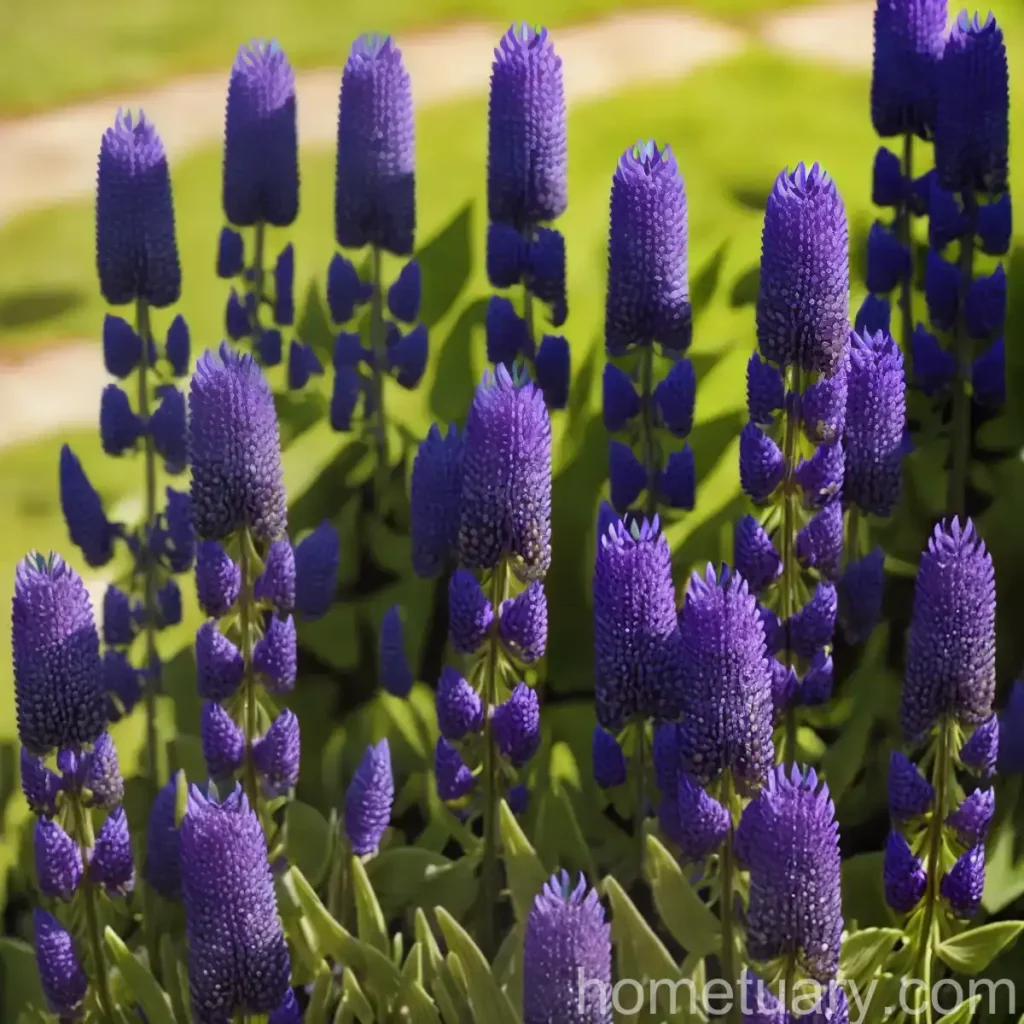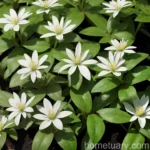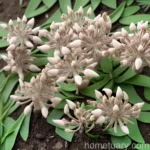Lupine (Lupinus ‘The Governor’): A Complete Guide to Plant Care and Cultivation
Lupines have been adorning gardens and landscapes for centuries. Their vibrant and strikingly beautiful flowers, in combination with their easy-to-care-for nature, make them a sought-after addition to any garden. In this extensive guide, we will delve into the world of lupines, focusing on the variety “The Governor” (Lupinus ‘The Governor’). We will explore its cultural significance, uses, and key cultivation requirements, along with valuable tips and insights on nurturing this exceptional plant.
What is Plant Lupine (Lupinus ‘The Governor’)?
Lupine, scientifically known as Lupinus, is a genus of flowering plants in the legume family, Fabaceae. This genus comprises over 200 species, which are widely distributed across the globe, predominantly in North and South America, Europe, and North Africa. Lupines are known for their distinctive pea-like flowers that bloom in an array of vibrant colors, including shades of blue, purple, pink, yellow, and white.
“The Governor” (Lupinus ‘The Governor’) is a specific variety of lupine that showcases stunning spikes of deep blue flowers. This cultivar is celebrated for its striking visual appeal and its ability to attract pollinators, making it a favorite among gardeners and landscape enthusiasts.
Key Takeaways – Lupine (Lupinus ‘The Governor’)
Before delving into the specific details of “The Governor” lupine, let’s summarize the key takeaways of this comprehensive guide:
- Cultural Significance: Explore the historical and cultural significance of lupines, including their symbolism and uses in gardens and landscapes.
- Uses: Learn about the various applications of “The Governor” lupine, including its suitability as a cut flower, its potential medicinal uses, and its role in garden design.
- Cultivation Requirements: Understand the essential needs of the plant, such as water, sunlight, soil, fertilizer, and pruning, to ensure optimal growth and blooming.
- Propagation and Container Gardening: Discover techniques for propagating lupines and insights into container gardening for “The Governor” variety.
- Common Diseases and Pests: Identify potential diseases and pests that may affect lupines and learn how to diagnose and manage them effectively.
- Botanist’s Tips: Benefit from expert tips and recommendations for growing and maintaining healthy “The Governor” lupine plants.
- Fun Facts: Uncover intriguing and lesser-known facts about lupines, including their pollinator attractions, seasonal characteristics, and fragrance.
- External Resources: Access links to external sources for further information and in-depth exploration of lupine cultivation.
Now, let’s dive into the detailed exploration of “The Governor” lupine, covering its culture, uses, growth requirements, care, and more.
Culture
Historical and Cultural Significance of Lupines
Lupines have a rich historical and cultural significance, with their presence documented in various mythologies and folklores. Historically, lupines were associated with symbols of imagination, inspiration, and elegant beauty, and were often used in art and literature to convey these traits. Their vibrant and diverse blooms have made them a popular subject of botanical illustrations and have been featured in numerous artistic creations.
In garden and landscape design, lupines are revered for their ability to add vertical interest and vibrant colors to outdoor spaces. They are frequently employed in cottage gardens, perennial borders, and wildflower meadows, contributing to the overall aesthetic appeal of the environment.
Symbolism and Uses in Gardens
Lupines are symbolic of numerous traits, including imagination, creativity, happiness, and positivity. Their association with imagination and creativity is deeply rooted in ancient folklore and continues to be reflected in modern garden design and landscaping practices.
Beyond their symbolic significance, lupines are extensively used in various garden applications, including:
-
Ornamental Plantings: Lupines, including “The Governor” variety, are favored for their ornamental value, accentuating garden beds, borders, and containers with their showy, upright flower spikes. They add texture and dimension to garden landscapes, creating visually appealing displays.
-
Cut Flowers: The striking blooms of “The Governor” lupine make them ideal for floral arrangements and bouquets. Their vivid blue flowers serve as captivating focal points in floral compositions, enhancing the beauty of indoor spaces.
-
Wildlife Gardens: Being pollinator attractors, lupines, including “The Governor,” play a vital role in supporting the biodiversity of wildlife gardens. Their nectar-rich blooms entice bees, butterflies, and hummingbirds, contributing to the ecological balance of the environment.
Uses
Garden Design and Landscaping
In the realm of garden design and landscaping, “The Governor” lupine presents a spectrum of uses and applications, enriching outdoor spaces with its captivating presence. Some of the prominent uses of this variety include:
-
Accent Planting: The tall, spiky flower stalks of “The Governor” lupine create a striking visual impact when planted in groups or clusters, serving as eye-catching focal points within garden beds or mixed borders.
-
Mass Plantings: When planted en masse, “The Governor” lupine can form impressive swaths of color, creating dramatic displays in open meadows, slopes, or naturalistic landscapes.
-
Container Gardening: Due to its elevated floral spikes and compact growth habit, “The Governor” lupine can be effectively cultivated in containers, adding vertical interest to patios, balconies, or small garden spaces.
Cut Flower Industry and Floral Design
The captivating flowers of “The Governor” lupine make it a desirable specimen for the cut flower industry and floral design. Its use in flower arrangements offers a unique touch to bouquets and adds an element of natural elegance. The deep blue hues of its flowers can serve as versatile components in various floral compositions, either as standalone focal points or as complementary elements to other blooms.
Medicinal and Herbal Uses
In addition to its ornamental and aesthetic value, lupines have been historically utilized for their potential medicinal properties. While “The Governor” lupine may not be as widely known for its medicinal uses compared to other species of lupines, some traditional practices have incorporated certain parts of the plant for medicinal applications. It’s important to note that proper research and consultation with healthcare professionals are essential before utilizing any plant for medicinal purposes.
The potential medicinal uses of lupines, including “The Governor” variety, are a subject of ongoing research and exploration, with a focus on their phytochemical constituents and potential health benefits. Caution and thorough understanding of the plant’s properties are imperative when considering the utilization of lupines for medicinal purposes.
Now that we’ve explored the cultural significance and uses of “The Governor” lupine, let’s shift our focus to the specific cultivation requirements and care guidelines for this exceptional variety.
Growing Lupinus ‘The Governor’
Water
Proper watering is essential for the successful growth and blooming of “The Governor” lupine. While lupines are known for their tolerance to dry conditions once established, they benefit from consistent moisture during their initial growth stages, especially during the germination and establishment phases. After the plants are well-established, they can withstand periods of moderate drought but will thrive with regular watering.
Key Tips for Watering:
– Provide consistent moisture during the germination and establishment phase.
– Ensure well-draining soil to prevent waterlogging, as excessive moisture can lead to root rot.
– Water deeply when required, allowing the soil to dry slightly between watering sessions.
Sunlight
“The Governor” lupine thrives in full sun to partial shade conditions, exhibiting strong growth and prolific flowering when provided with ample sunlight. In regions with intense summer heat, providing partial shade during the hottest part of the day can help protect the plants and prolong their blooming period. Adequate exposure to sunlight promotes robust foliage and stimulates abundant flower production.
Key Sunlight Requirements:
– Plant in locations with at least 6-8 hours of direct sunlight per day for optimal growth and flowering.
– Provide partial shade during hot afternoon periods in regions with intense summer heat to prevent stress on the plants.
Fertilizer
Lupines, including “The Governor” variety, generally thrive in nutrient-rich soil with minimal additional fertilizer requirements. However, incorporating organic matter into the soil prior to planting can provide a beneficial nutrient boost, aiding in the establishment and early growth of the plants.
Fertilization Guidelines:
– Amend the soil with well-rotted compost or organic fertilizer before planting to enhance soil fertility.
– Avoid excessive use of high-nitrogen fertilizers, as this can promote excess foliage growth at the expense of flower production.
Soil
Well-drained, slightly acidic to neutral soil is ideal for cultivating “The Governor” lupine. The plants exhibit preference for soil with good drainage, as they are susceptible to root rot in waterlogged conditions. Additionally, soil with a slightly acidic to neutral pH range promotes optimal nutrient uptake and supports healthy root development.
Recommended Soil Conditions:
– Opt for well-drained, loamy soil with a pH range of 6.0 to 7.0 for ideal growing conditions.
– Consider incorporating organic matter, such as compost or peat moss, to improve soil structure and fertility.
Pruning
Pruning lupines, including “The Governor” variety, is primarily focused on deadheading spent blooms to promote continuous flowering and to prevent self-seeding. Regular deadheading not only maintains the plant’s attractive appearance but also encourages the production of new flower spikes, extending the blooming period.
Pruning and Deadheading Tips:
– Trim off spent flower spikes to encourage the emergence of new blooms and prolong the flowering season.
– Remove any withered or yellowing foliage to maintain the overall health and vigor of the plants.
Propagation and Container
Propagation Techniques
Lupines, including “The Governor” variety, can be propagated through several methods, including seeds, division, and stem cuttings. Each propagation method offers unique benefits and is suited for different situations, allowing for flexibility in expanding the plant’s population or establishing new plantings.
Propagation Methods:
– Seeds: Collect mature seeds from the plants for sowing in prepared soil or containers during the appropriate sowing period.
– Division: Divide established clumps of lupines to create new plants, ensuring each division possesses healthy root systems for successful establishment.
– Stem Cuttings: Obtain stem cuttings from healthy, actively growing plants and root them in a suitable growing medium to produce new plants.
Container Gardening
“The Governor” lupine lends itself well to container gardening, offering an opportunity to enjoy its remarkable beauty in confined spaces such as patios, balconies, and urban gardens. When grown in containers, certain considerations should be taken into account to ensure the health and vitality of the plants.
Key Considerations for Container Gardening:
– Select spacious containers with adequate drainage holes to avoid waterlogging and enable proper aeration of the roots.
– Utilize well-draining potting mixes, ideally formulated for perennial flowering plants, to provide essential nutrients and support healthy growth.
Popularity
“The Governor” lupine has gained notable popularity among gardeners, landscaping professionals, and enthusiasts due to its exceptional characteristics and visual appeal. Its deep blue flowers, prominently displayed on tall spikes, serve as captivating features in various garden settings, contributing to its widespread recognition and demand.
Gardeners’ Favorites
Gardeners gravitate towards “The Governor” lupine for its:
-
Vivid Floral Display: The rich blue flowers of “The Governor” lupine stand out in garden landscapes, enhancing the aesthetic appeal of outdoor spaces.
-
Ease of Cultivation: With proper care and suitable growing conditions, “The Governor” lupine is relatively easy to grow, making it accessible to gardeners of varying experience levels.
-
Pollinator Attraction: The nectar-rich blooms of “The Governor” variety serve as valuable food sources for bees, butterflies, and other pollinators, enhancing the ecological diversity of garden environments.
-
Vertical Accent: The tall flower spikes of “The Governor” lupine offer an impressive vertical element, contributing to diverse and well-structured garden layouts.
Landscape Uses
“The Governor” lupine finds versatile applications in landscape design, serving as a valuable addition in:
-
Perennial Borders: Its striking floral display complements perennial borders, injecting color and charm into mixed plantings.
-
Wildlife Gardens: As a pollinator attractor, “The Governor” lupine contributes to the vitality of wildlife-friendly gardens, supporting the presence of bees, butterflies, and hummingbirds.
-
Rock Gardens: The compact growth habit of “The Governor” lupine makes it suitable for rock gardens, offering an elegant flowering accent in confined spaces.
Common Diseases
Despite being generally hardy, lupines, including “The Governor” cultivar, are susceptible to certain diseases and disorders that can affect their growth and vitality. Recognizing and addressing these issues promptly is crucial in maintaining the health and vigor of the plants.
Disease Diagnosis
Some of the common diseases that may afflict “The Governor” lupine include:
-
Powdery Mildew: The presence of powdery white spots on the foliage, accompanied by reduced vigor and stunted growth, indicates a potential powdery mildew infection.
-
Anthracnose: Circular lesions with brownish margins on the leaves and stems can signify anthracnose, a fungal disease that can affect lupines.
-
Root Rot: Yellowing and wilting of foliage, along with a general decline in plant health, may point to root rot, often a result of waterlogged soil conditions.
-
Leaf Spot: The development of brown or black spots on the leaves, sometimes surrounded by yellow halos, suggests a leaf spot infection, which can impact the overall health of the plant.
Disease Management
Implementing proactive measures for disease management is vital in safeguarding “The Governor” lupine from potential infections and ensuring its long-term well-being. Strategies for disease management include:
-
Cultural Practices: Maintain proper spacing between plants to encourage air circulation and reduce the risk of fungal diseases. Additionally, avoid overhead watering to minimize moisture on the foliage.
-
Sanitation: Remove and dispose of any affected plant material, including diseased foliage and spent flowers, to prevent the spread of diseases within the garden.
-
Fungicidal Treatments: In severe cases of fungal infections, consider applying appropriate fungicidal treatments according to product labels and recommendations.
Common Pests
Pests can pose a threat to the health and appearance of “The Governor” lupine, necessitating vigilant monitoring and effective pest management strategies to mitigate potential damage.
Pest Identification
Some of the common pests that may target lupines, including “The Governor” variety, include:
-
Aphids: Small, soft-bodied insects, usually green or black in color, can cluster on the tender shoots and flower buds, causing distortions and stunted growth.
-
Spider Mites: These tiny arachnids can infest lupine plants, manifesting as stippling and discoloration of the foliage, often accompanied by fine webbing on the undersides of the leaves.
-
Snails and Slugs: These mollusks can feed on the foliage and flowers of “The Governor” lupine, leaving behind irregularly shaped holes and damage to the plant’s tender parts.
-
Caterpillars: Certain caterpillar species may feed on lupine foliage, resulting in defoliation and diminished plant vigor if left unchecked.
Pest Control Measures
To effectively manage pest infestations, consider the following control measures:
-
Manual Removal: Physically remove aphids, spider mites, snails, and slugs from the plants, employing methods such as handpicking or spraying with a strong stream of water.
-
Natural Predators: Encourage the presence of natural predators such as ladybugs, lacewings, and predatory mites, which feed on aphids and spider mites, offering biological control of pest populations.
-
Barriers and Traps: Use physical barriers and traps to deter snails, slugs, and crawling insects from reaching and damaging the plants.
-
Botanical Insecticides: When necessary, consider resorting to botanical insecticides or insecticidal soaps as a targeted approach to managing persistent pest issues.
With a solid understanding of the common diseases and pests that can influence “The Governor” lupine, gardeners can proactively address these challenges, maintaining the health and vitality of their plants.
Botanist’s Tips
Expert Recommendations for Growing “The Governor” Lupine
To ensure the successful cultivation of “The Governor” lupine, consider the following expert tips and recommendations from botanists and horticulture professionals:
-
Choose Well-Drained Sites: Plant “The Governor” lupine in locations with well-drained soil to prevent waterlogging and minimize the risk of root rot.
-
Provide Structural Support: Given the upright growth habit of “The Governor” lupine, providing support in the form of stakes or plant supports can help prevent stem breakage and promote an organized growth form.
-
Mulch Application: Apply a layer of organic mulch around the base of the plants to conserve soil moisture, suppress weed growth, and offer insulation against temperature fluctuations.
-
Routine Deadheading: Practice regular deadheading of spent flower spikes to encourage continuous blooming and maintain a tidy, attractive appearance.
-
Eco-Friendly Pest Control: Emphasize natural and eco-friendly pest control measures, such as encouraging beneficial insects and employing organic pest management techniques, to minimize the use of chemical interventions.
Soil Amending and pH Testing
Before planting “The Governor” lupine or introducing it to a new garden location, it is advisable to conduct a soil test to assess the existing pH and fertility levels. Based on the test results, appropriate amendments can be made to optimize the soil conditions for the plants’ growth.
Soil Testing and Amending:
– Conduct a soil test to determine the pH and nutrient levels of the planting site.
– Amend the soil as needed to achieve the preferred pH range and enhance soil fertility for optimal plant health and growth.
Seasonal Care and Maintenance
Throughout the growing season, attention to seasonal care practices can contribute to the overall well-being and performance of “The Governor” lupine. Consider implementing the following seasonal care strategies:
- Spring: Provide supplemental watering as needed, especially during dry spells, to support the early growth of the plants and facilitate the emergence of flower spikes.
- Summer: Monitor for signs of pests and diseases, implementing proactive pest management and disease control measures to maintain the health of the plants.
- Fall: Consider applying a protective layer of organic mulch around the base of the plants to insulate the root zone and ready them for the winter months.
- Winter: Evaluate the need for winter protection in colder climates, such as providing mulch or coverings to safeguard the plants from harsh temperatures.
By incorporating these expert recommendations and seasonal care practices, gardeners can foster healthy, resilient “The Governor” lupine plants, ensuring their robust growth and continual bloom production.
Fun Facts
Intriguing Insights into “The Governor” Lupine
Let’s delve into some fascinating and lesser-known facts about “The Governor” lupine, shedding light on its unique characteristics and charm:
-
Pollinator Attraction: “The Governor” lupine is a reliable pollinator attractor, drawing the attention of bees, butterflies, and hummingbirds with its nectar-rich flowers. Its role in supporting pollinators contributes to the ecological balance and biodiversity of garden environments.
-
Fragrant Blooms: While primarily known for its striking visual appeal, “The Governor” lupine can also emit a subtle fragrance from its blooms, adding an ol















